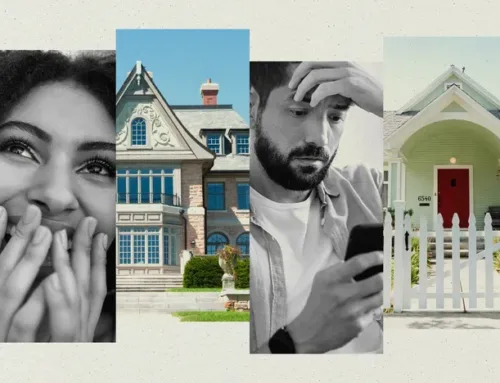Feb 27, 2023

When people hear that the United States Department of Agriculture offers home homes, many might presume they’d have to buy a farm out in the country to qualify. But it’s just not true.
In fact, according to the Housing Assistance Council, 97% of U.S. land is within USDA-loan-eligible boundaries, where about one-third of all Americans live.
“Even though they are rural loans, USDA loans are not just for farmers,” says Jill Gonzalez, an analyst for WalletHub. “They are meant to promote homeownership in areas that have lower populations. In some cases, suburbs could also be included in this category.”
But how do you know if a home you’re looking at is in the USDA loan zone?
Real estate listings on Realtor.com® typically indicate which homes are eligible for USDA loans. Beyond that, there is a variety of tools and guidelines you can use to verify which homes and areas qualify.
How to tell if a location is USDA-loan eligible
Since one goal of USDA loan programs is to invigorate sparsely populated areas, population size is one criteria for determining whether a home meets USDA-loan eligibility. Furthermore, the USDA will also factor a home’s proximity to urban centers and the area’s overall access to mortgage credit.
Those criteria combined, there are three parameters within which a location can be deemed loan-eligible by the USDA:
- The area has fewer than 10,000 residents.
- The area has fewer than 20,000 residents and is not located in a metropolitan statistical area (meaning it’s not close to a city) and lacks sufficient mortgage credit for low- and moderate-income families.
- It has no more than 35,000 residents, was once considered a USDA-loan-eligible rural area (but lost its status in a recent Census), yet still has a dire lack of access to mortgage credit.
As you can see, there is a lot that goes into the USDA’s final determination of an area’s eligibility. The criteria mean that many small towns and suburbs fit firmly within the loan requirements.
Plus, the USDA’s definition of “rural” is constantly in flux, and an area’s designation can change according to Census data every 10 years—the next change will happen in 2030. So, while the numbers can indicate whether an area is potentially eligible, the final decision on a location’s status always rests with the USDA.
How to check an address to see if it’s USDA loan eligible
The USDA website has an interactive map, where you can enter an address to check its eligibility.
“Approved lenders use the USDA website as well,” says Gonzalez.
If you don’t have an actual address, you can also zoom in on the map to get a sense of which areas are eligible. Shaded areas near cities are off limits, but the lighter areas outside of metropolitan centers are fair game (and make up a good chunk of the map).
You can even magnify the map to identify specific towns and cities that fall within the USDA’s rural definition. This is also a great way to get an idea of which smaller towns, not too far outside of larger urban centers, may qualify. This capability helps potential homebuyers broaden their searches.
Ask your lender or real estate agent to help you verify a location
The most accurate alternative to the website is to ask your loan officer.
“They’ll know better about the area you’re looking at and can help you determine whether you’re eligible for a loan there,” says Michael Winkler, co-founder and chief strategist at Sell Home Today. “Another good alternative is to ask a real estate agent knowledgeable in the area.”
The bottom line is that a “rural” designation comes from a combined calculation of population and geography. But if you find a USDA-loan-eligible location you like, your new home might be closer than you think.
Source- https://www.realtor.com/advice/finance/which-locations-qualify-for-a-usda-loan/






